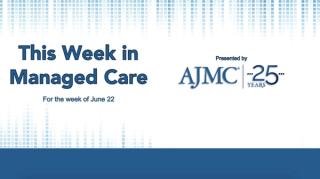
HIV
Latest News

Latest Videos

CME Content
More News

Will Nutland, DrPH, is cofounder of PrEPster, honorary assistant professor at the London School of Hygiene and Tropical Medicine, and an activist.

A possible connection between integrase strand-transfer inhibitor (INSTI) use for HIV and cardiovascular disease (CVD) was investigated in this new study from an international team wanting more knowledge on the drug class’s treatment effects.

The Senate passed a bipartisan gun law, the first major gun legislation in nearly 30 years, which now goes to the House; HIV cases dropped during the pandemic, perhaps due to lack of testing; researchers say COVID-19 vaccines have saved nearly 20 million lives but could be even more effective.

The findings of this study, which used insurance claims data for patients 2 years and older to determine rates of meningococcal A, C, W, Y vaccine uptake, points to the need for more education, the authors said.

Bruce House in Ottawa, Ontario, Canada, has been serving individuals living with HIV and AIDS for 34-plus years. Here we speak with Patrick Morley, office and communications coordinator.

Researchers emphasize the importance of characterizing and recognizing this subtype to identify patients at risk of Kaposi sarcoma.

The new trial was the first to investigate outcomes among a patient population living with HIV (PLWH) who were treated for anal precancerous growths, or high-grade squamous intraepithelial lesions.

Amanda Ely is CEO of the Children’s HIV Association (CHIVA), an organization that provides support to children living with HIV in the United Kingdom and Ireland and their families.

An experimental cancer drug made 100% of patients’ rectal tumors disappear in a small study; US military members with HIV with an undetectable viral load and no symptoms will no longer face restrictions in deployment or commission; President Biden may sign an executive order on abortion rights depending on the Supreme Court’s ruling.

A small study found that 2 broadly neutralizing anti-HIV antibodies could help achieve long-term virological suppression in patients with HIV who were taken off antiretroviral therapy.

Will Nutland, DrPH, is cofounder of PrEPster, honorary assistant professor at the London School of Hygiene and Tropical Medicine, and an activist.

Using a 6-month lagged CD4/CD8 ratio, researchers found a ratio of 0.30 was associated with a 24% increased risk of any incident cancer among people living with HIV, compared with a ratio of 0.80.

Adolescent girls and young women in South Africa were more likely to practice favorable sexual behaviors if they accessed DREAMS (Determined, Resilient, Empowered, AIDS-free, Mentored, and Safe)–like interventions such as school-based HIV prevention and HIV testing.

Anna Brewster, services and volunteer manager at The Food Chain, a London-based charity that provides short-term assistance to persons living with HIV (PLWH), discusses how education provided through the Eating Positively program connects the importance of food and proper nutrition to health outcomes.

Research shows that long-term antiretroviral therapy (ART) can improve the overall health and survival of mothers living with HIV and their children who have been exposed to HIV.

Anna Marzec-Bogusławska, MD, MPH, managing director, National AIDS Center, Warsaw, Poland, discusses how stigma and discrimination permeated the beginning of the HIV/AIDS epidemic the country in the early 1980s and ways that advocates stepped up to overcome peoples’ fears.

New research shows that cortisol and cortisone levels in the hair of people living with HIV were negatively associated with CD4 count, but not with HIV viral load.

Nicoleta Dascalu, founding member and advocacy manager of Asociaţia Română Anti-SIDA (ARAS; Romanian Association Against AIDS), discusses the status of care for persons living with HIV/AIDS (PLWH) in Romania, including health care coverage and lack of adequate medication access.

Jason Myers, PhD, CEO of the New Zealand AIDS Foundation, addresses how New Zealand promptly adjusted its delivery of services for people living with HIV and AIDS in New Zealand, with examples including HIV self-test kits, online counseling, and provision of mental health care assistance.

According to a review, few individuals initiating tenofovir disoproxil fumarate (TDF)–based HIV pre-exposure prophylaxis (PrEP) experienced clinically significant kidney impairment, although the risk was increased.

Researchers found point-of-care viral load (POC VL) tests have high sensitivity and specificity for detection of viral loads of at least 1000 copies/mL.

Research shows that only 1.05% of US emergency department (ED) visits included HIV testing in 2018 and that HIV testing rates varied by race, age group, and region.

Editor’s Note: After this issue of Evidence-Based Oncology™ went to press, Bristol Myers Squibb Foundation announced the $100 million, 5-year initiative will now be called the Robert A. Winn Diversity in Clinical Trials Award Program. The program will also receive a $14 million donation from Gilead Sciences, Inc., over the next 4 years.

Using data from the National HIV Surveillance System, the National Center for Health Statistics, and the US Census, a team from the CDC investigated lifetime HIV risk in the United States.

A large systematic review on pregnant women living with HIV found that protease inhibitor–based antiretroviral therapy (ART) use was associated with increased risk of babies being born small or very small for their gestational age, but not with other adverse pregnancy outcomes.



















































